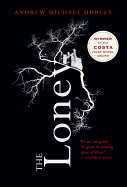
A sense of doom permeates Andrew Michael Hurley's debut novel from the start. Is it the reference to the bones of a baby discovered at the Loney, a part of the Lancashire coastline, or because Smith, the narrator, lets slip that his parish priest has recently died under mysterious circumstances? Is it his devoutly Catholic mother's rigid overemphasis on ritual, or the secret quarantine room his family discovers in the Moorings, a rental property on the coast? Whatever it is, the menace that pervades Hurley's novel hangs over the Loney itself as Smith and his family visit the strange area on their annual Easter pilgrimage to find a miracle cure for Hanny, his disabled brother.
After establishing this unspoken air of menace, Hurley moves The Loney backward and forward in time, weaving Smith's recollections of his childhood as an altar boy, memories of past visits to the Loney, and strange moments surrounding the Moorings' history into the story of Smith's final pilgrimage. The slow, creeping nature of the plot gives Hurley room to explore questions of faith and doubt.
"It's funny, int it?" asks one of the Loney townsfolk. "How you church people can have more faith in something that can't be proved than something that's standing right in front of you? I suppose it comes down to seeing what you want to see, dunt it?" The Loney offers a story of things seen and proved and then things unseen and unproved--and what happens when one boy's memories live between the two. --Kerry McHugh, blogger at Entomology of a Bookworm

